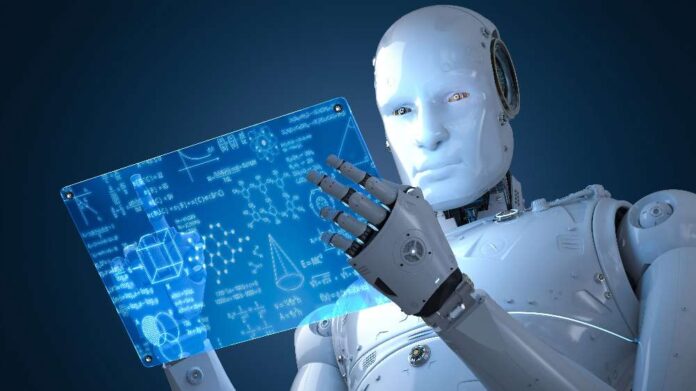Table of Contents
The domains of artificial intelligence and robotics have undergone substantial progress in the past few years, stimulated by the swift development of computational capabilities, accessibility of data, and inventive algorithms.
These improvements have created unparalleled synergies between the two fields, empowering robots to learn independently and adjust to novel jobs, surroundings, and difficulties. This write-up intends to analyze the association between artificial intelligence and robotics, emphasizing present patterns and forthcoming possibilities in this stimulating interdisciplinary realm.
Machine Learning and Robotics: A Powerful Partnership
Artificial intelligence (AI) encompasses machine learning, a field that empowers computers to gain knowledge and make informed decisions by analyzing data without requiring explicit programming. With the help of algorithms, machine learning can identify patterns, extract valuable insights, and forecast outcomes from complex datasets.
When combined with robotics, machine learning can amplify a robot’s capabilities, enabling it to learn from its environment, adapt to new situations, and refine its performance with time.
Conversely, robotics is a technological field that centers on the creation, development, management, and utilization of automatons. These machines are mainly utilized to accomplish assignments that are perilous, protracted, or wearisome for people.
By fusing machine learning programs into robotic mechanisms, we can produce intelligent robots that have the capability to execute a diverse array of tasks with heightened effectiveness, accuracy, and autonomy.
Current Trends in Machine Learning and Robotics
Reinforcement Learning
Reinforcement learning refers to a category of machine learning where an agent acquires the ability to make decisions by engaging with its surroundings and obtaining feedback in the form of rewards or punishments.
This methodology has demonstrated immense potential in the realm of robotics, as it empowers robots to acquire new skills and adjust to evolving environments by means of trial and error. Reinforcement learning has been efficiently employed in a diverse range of robotic activities, such as robotic manipulation, navigation, and locomotion.
Reading SUggestion: Qourdle Com: Play Word Game Each Day
Computer Vision
The area of computer vision concentrates on empowering machines to decode and comprehend visual data from their surroundings. When computer vision algorithms merge with machine learning, robots can discern and construe their environment, making them proficient in navigating intricate surroundings and executing duties that necessitate object recognition, tracking, and localization.
Human-Robot Interaction
With the growing integration of robots into our daily routine, it has become crucial to ensure efficient human-robot interaction (HRI). To improve HRI, machine learning methods like gesture recognition and natural language processing can be employed.
These techniques enable robots to comprehend and react to human emotions, intentions, and directives. This can lead to more intuitive and user-friendly robotic systems that can work seamlessly alongside humans.
Swarm Robotics
The realm of study that concentrates on the advancement of multi-robot systems that can collaborate to attain shared objectives is called swarm robotics. The coordination of the actions of these robotic swarms can be achieved by utilizing machine learning, which enables them to modify their behavior according to the environment and the performance of individual robots.
This can lead to the creation of more effective and resilient robotic systems that can handle intricate tasks like search and rescue missions, environmental surveillance, and infrastructure upkeep.
Unlocking the Potential: Education and Training
In order to fully utilize the capabilities of machine learning and robotics, it is essential for experts to have a comprehensive understanding of both fields. Pursuing higher education programs, such as an MS in USA without GRE and IELTS, can provide individuals with the foundational knowledge and skills necessary to excel in this rapidly evolving field.
These programs often cover topics such as AI, machine learning algorithms, robotic systems, and control theory, preparing graduates for careers in research and development, as well as in the design and implementation of intelligent robotic systems.
In addition to formal education, professionals can benefit from enrolling in specialized Machine Learning Courses that focus on the application of machine-learning techniques in robotics.
These classes enable people to cultivate a thorough comprehension of the most recent breakthroughs in machine learning and robotics, along with their pragmatic uses in diverse sectors. By keeping pace with the latest progressions and gaining practical exposure, experts can establish themselves for triumph in this vibrant and multidisciplinary domain.
Future Prospects and Challenges
The integration of machine learning and robotics presents numerous opportunities for innovation and improvement across various sectors. With the advancement of technology, it is anticipated that the progress of more advanced and competent automated systems will take place, which can aid or even substitute humans in a vast range of responsibilities, encompassing household errands to intricate manufacturing procedures.
Despite the immense potential of machine learning and robotics, several challenges remain to be addressed. One of the primary concerns is the ethical implications of the widespread adoption of intelligent robots, particularly in the context of employment displacement and the potential misuse of robotic technology. Ensuring responsible development and deployment of intelligent robotic systems is crucial to mitigate these concerns and maximize the benefits of this technology.
Another challenge lies in the development of robust and reliable robotic systems that can operate safely in complex and uncertain environments. Ensuring that machine learning algorithms can generalize well and cope with unforeseen situations is vital to the deployment of robotic systems in real-world applications. Addressing these challenges requires continued research and collaboration between experts in machine learning, robotics, and other related fields.
Conclusion
The correlation between artificial intelligence and automation is a robust and evolving one, with the capability to transform the manner in which we engage with and reap the rewards of technology. The current trends in reinforcement learning, computer vision, human-robot interaction, and swarm robotics showcase the immense possibilities offered by the integration of machine learning and robotics. As professionals in the field continue to develop their skills and knowledge through higher education programs and specialized courses, we can anticipate even more innovative and transformative applications of intelligent robotic systems.
Although there are obstacles, such as moral considerations and the creation of trustworthy robotic systems, tackling these matters will clear the path for a forthcoming era in which artificial intelligence and automation can collaborate to enhance our existence and tackle intricate predicaments in diverse sectors. By understanding the relationship between these two disciplines and embracing the opportunities they present, we can unlock the full potential of this powerful partnership and shape a brighter future for both humans and machines.















